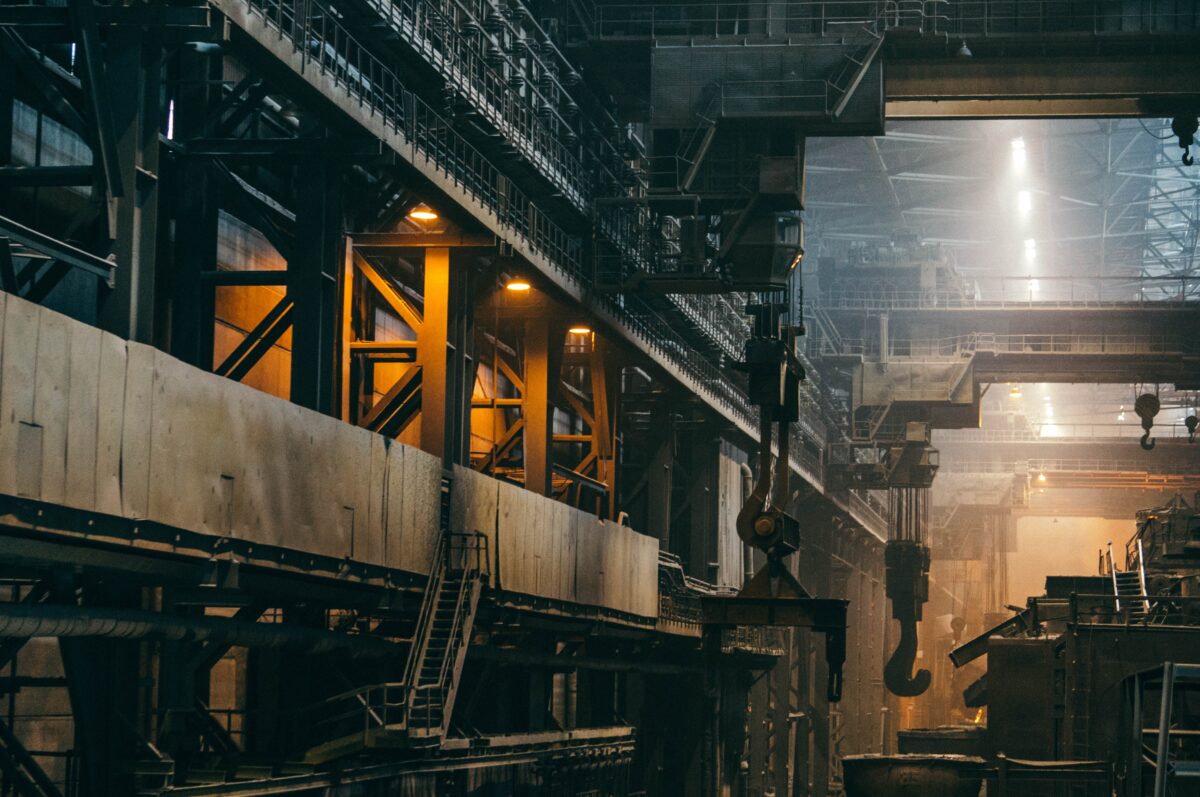Steel is present in a myriad of everyday items from cutlery to refrigerators, and the global steel industry directly employs more than six million people. It is, undoubtedly, a necessary material and industry, but it contributes to a significant amount of climate change-inducing emissions. During the Paris Climate Agreement in 2015, the United Nations declared that the world must reach net-zero emissions by 2070 and achieve a significant reduction in emissions by 2030 in order to prevent irreversible global warming. So, how can the steel industry cut its emissions in order to abide by the goals of the Paris Climate Agreement? As it turns out, Boston Metal can provide the answer: green steel.
The steel industry contributes about 7% of carbon emissions globally with the production of 2 billion tons of steel each year, and the high temperature processes that accompany steel production make it difficult for a clean-energy alternative to be used. To create steel, iron ore is crushed and turned into sinter (a rough solid), and separately, coal is baked and converted into coke. Once completed, the ore and coke are then mixed with limestone and immersed into a large blast furnace where, under high temperatures, the coke burns and the mixture produces liquid iron. The molten material then goes into an oxygen furnace, where it’s blasted with pure oxygen forcing the carbon off and leaving crude steel as the final product. This process involves a significant amount of carbon emissions from the burning of fossil fuels to power the furnace. The process also uses nonrenewable resources such as carbon, which means the process of steel is depleting the earth’s resources. In some instances, scrap metal can be recycled and reused to produce more steel, but there is a limited scrap supply. Thus, it is estimated that more than half of the steel produced in 2050 will likely come from primary ore-based production.
Enter: Boston Metal.
In January, Boston Metal, a global metals technology solution company, received a $120 Million dollar boost from the world’s second-largest steelmaker, ArcelorMittal, to produce green steel. Green steel is essentially the production of steel without the use of fossil fuels. As aforementioned, the production of steel requires very high temperatures (above 2600°F), so it is difficult to find a fossil fuel alternative. Boston Metal, though, has found a way around this obstacle by using an electrolysis process that eliminates the need for coal. Electrolysis is an electro-chemical process that uses electric currents to separate chemical compounds into their constituent parts. In the case of steel, an inert anode (a replacement for carbon) is submerged into an electrolyte containing iron ore and electrified inside of a contained cell. The cell is then heated to 1600°C causing the electrons in the iron ore to split, resulting in a clean, high purity liquid metal that can be sent directly to ladle metallurgy with no reheating necessary. Boston Metal has dubbed this process Molten Oxide Electrolysis (MOE), and it works with all iron ore grades and does not require processed water, hazardous chemicals, or rare-metal catalysts to operate, all making it less environmentally harmful. They plan to use the influx of funds to expand the production of green steel at their pilot plant in Woburn, Massachusetts, and launch commercial production in Brazil.
The growth of this electro-chemical steel development process will change the emission-heavy direction of the steel industry and boost global initiatives of net-zero emissions. However, as seen in the huge cost generated by Boston Metal, green steel is expensive. SSAB, a Swedish steel maker, estimated its fossil-free steel would be 20 to 30% more expensive than regular steel. To meet this production cost, transitioning to green steel production will require an estimated $6 billion investment annually on top of the $30 billion that the steel sector already needs to meet growing global demand each year. However, in a decarbonised world, Mission Possible Partnership predicts the average cost of regular steel will increase by 15% whereas the production cost of green steel will drop. In the long term, Boston Metal’s report on the MOE process highlights how their simplified process eliminates the need for coke production, iron ore processing, blast furnace reduction, and basic oxygen furnace refinement, which will ultimately reduce costs.
The race for green steel is officially on, as many international companies are working towards the production of the cleaner and greener metal. In the coming years, there will be an expected push from governments worldwide in the production of green steel. Political pressure is growing when it comes to environmental initiatives, especially concerning clean energy. The demand for clean energy will integrate with green steel production, as those technologies are increasingly being used. The rise of green steel, as well as other green production methods and eco-friendly technologies, paves a path for a sustainable future of production and consumption.
Sources
Davey, Ed. “Boston Metal Gets $120 Million Boost to Make ‘Green Steel’ – The Boston Globe.” BostonGlobe.com, The Boston Globe, 27 Jan. 2023, https://www.bostonglobe.com/2023/01/26/business/boston-metal-gets-120-million-boost make-green-steel/.
David. “How Is Steel Made?” Reliance Foundry Co. Ltd, 1 Dec. 2022, https://www.reliance-foundry.com/blog/how-is-steel-made#:~:text=How%20to%20make %20steel,than%20is%20correct%20for%20steel.
“Green Steel Makes Headway in 2022 but Is It Ready to Take off?” Energy Tracker Asia, 4 July 2022, https://energytracker.asia/green-steel/.
“Green Steel Solution.” Boston Metal, 25 Jan. 2023, https://www.bostonmetal.com/green-steel-solution/.
Gula, Andrew. “What Is Green Steel?” Metal Supermarkets, 30 June 2022, https://www.metalsupermarkets.com/what-green-steel/#:~:text=The%20green%20steel% 20production%20process&text=This%20involves%20chemically%20reducing%20the,m elted%20to%20produce%20the%20steel.
Wallach, Written By Omri, and Graphics & Design Sabrina Fortin. “Green Steel: Decarbonising with Hydrogen-Fueled Production.” Visual Capitalist, 28 Sept. 2022, https://www.visualcapitalist.com/sp/green-steel-decarbonising-with-hydrogen-fueled-pro duction/.

